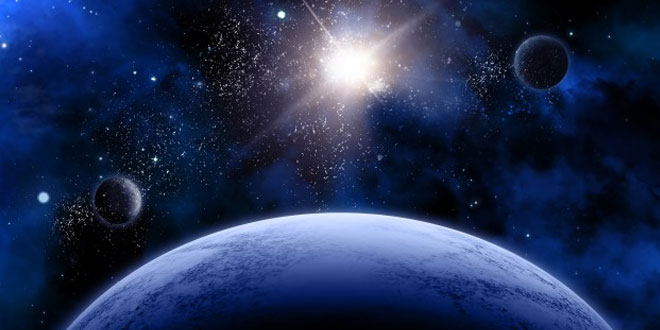Question: Write a short note on Ursa Major.
Answer: It resembles the shape of a ladle. The four stars which appear as four vertices of a quadrilateral make the bowl of the ladle and the remaining three stars make the handle of the ladle. Ursa Major appears in the northern sky. The pole star is in line with last two stars of the quadrilateral. Since this constellation appears quite close to the pole star, it looks as if revolving around the pole star.
Question: Write a short note on Solar System.
Answer: The solar system is made up of the sun, its planets, satellites, asteroids, comets, dwarf planets, etc. All other members of the solar system keep on revolving around the sun. This is possible because of the gravitational attraction between the sun and these bodies. The solar system is 4.6 billion years old.
Question: What are asteroids?
Answer: The asteroid belt is present between the orbits of Mars and Jupiter. This belt extends between 2.3 and 3.3 AU from the sun. Asteroids are made up of rocks, metallic minerals and some ice. They are remnants of formation of the solar system.
Question: What are meteors and meteorites?
Answer: When a small object from the space reaches the atmosphere of the earth; it enters at a very high speed. The high speed creates so much friction that the object burns off before reaching the earth. Such objects are called meteors. They are visible as shooting stars in the night sky. Sometimes, an object can be too big to be completely destroyed by burning. Such objects reach the surface of the earth and are called meteorites. A meteorite can cause huge damage to the earth; like destroying a huge population of living beings.
Question: Write a short note on Mercury.
Answer: Mercury is the smallest planet in the solar system and is nearest to the sun. It is at a distance of 0.4 AU from the sun. This is so close to the sun that it cannot be seen without a powerful telescope.
Question: Why is the Venus called the morning and evening star?
Answer: After moon; Venus is the brightest object in the night sky. Venus is visible in early evening during the summer months and in early morning during winters. Due to this, Venus is also called the morning and evening star.
Question: What do you understand by phases of moon? What is the reason for different phases of moon?
Answer: The moon does not appear similar on different days rather its shape changes every day. The different shapes of the moon are called the phases of moon.
Reason of Phases of Moon: The moon takes same time in completing a revolution and a rotation. Due to this, only one surface of the moon is visible from the earth. The surface which is visible from the earth gets varying ratios of light and shadow. Due to this, we are able to see different phases of moon.
Question: Explain some salient features of the Earth.
Answer: Earth is the only planet where life is known to exist. According to scientists; earth is at a perfect distance from the sun and hence it has the right combination of gases, materials and temperature to support life. A major portion of the earth’s surface is covered with water and hence it appears blue from the space. Due to this; earth is also called the blue planet.
Earth’s orbital plane is tilted at 23.5° on its equatorial plane. This means that earth’s axis is tilted at 66.5o° on its orbital plane. Seasons change on earth because of this tilt.
 Class Notes NCERT Solutions for CBSE Students
Class Notes NCERT Solutions for CBSE Students


